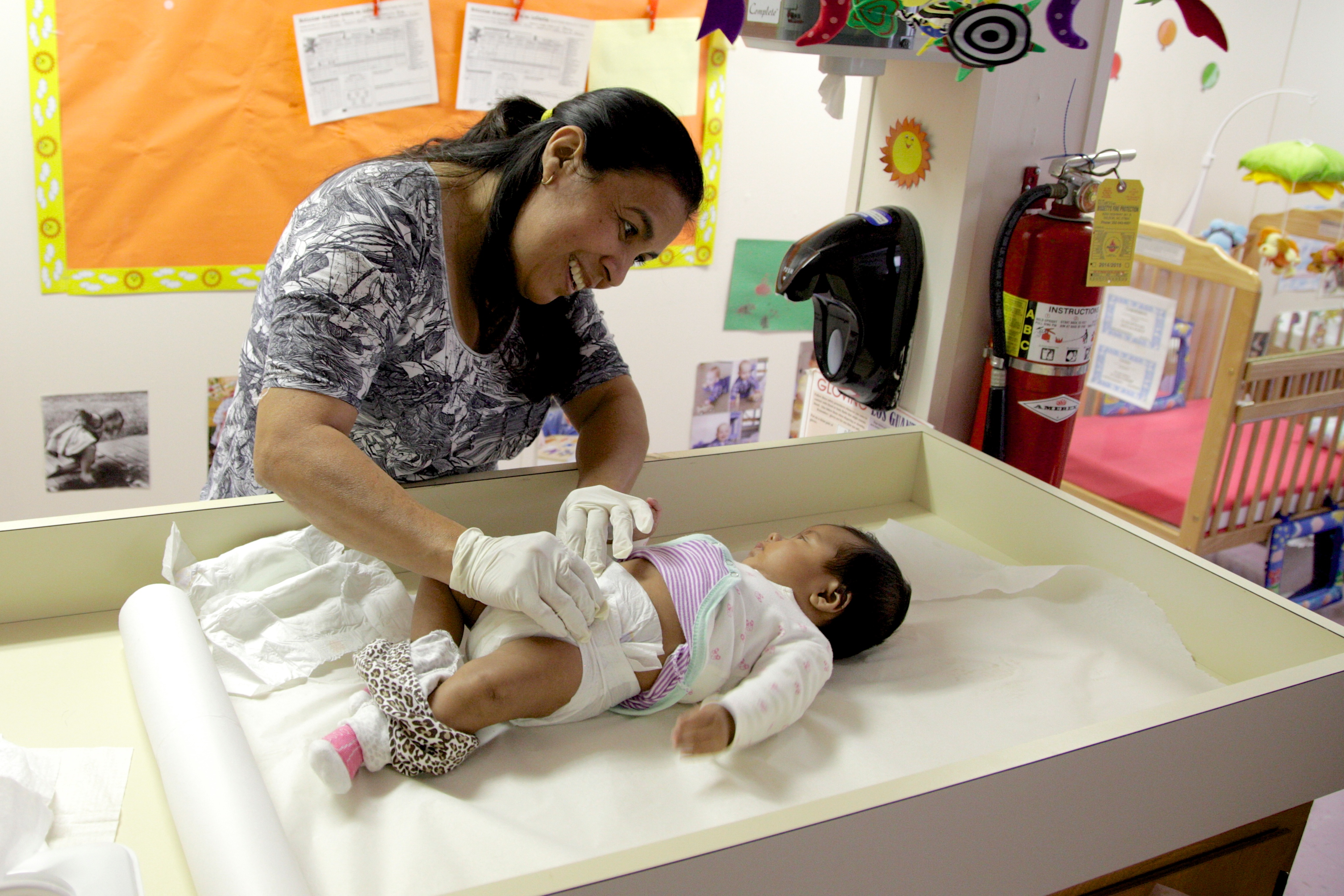 Diapering and toileting of young children can spread infectious diseases through the fecal-oral route. Some diseases, like cytomegalovirus (CMV), can spread through urine. Carefully planning the diapering and toileting areas and steps can reduce the risk of spreading illness.
Diapering and toileting of young children can spread infectious diseases through the fecal-oral route. Some diseases, like cytomegalovirus (CMV), can spread through urine. Carefully planning the diapering and toileting areas and steps can reduce the risk of spreading illness.
Diaper changing areas should never be in food preparation areas and should never be used for temporary placement of food, drinks, or eating utensils. Toilet and hand-washing areas should be in the best place to meet the developmental needs of children. For preschool children, toilet and hand-washing areas should be near the entrance to the group room and near the entrance to the playground. If both entrances are close to each other, then only one toilet and hand-washing area is needed. Ideally, toilets and sinks should be child sized.
When planning for diapering:
- Place the diapering area away from areas for preparing food, cooking, eating, and children's activities.
- Have a sink with running water for hand-washing in the diapering area.
- Have diapering tables that are at a comfortable height for staff and have necessary supplies within arm's reach so staff can always keep one hand on the child. Use the diapering surface only for diapering.
- The diapering surface should be smooth (free of cracks and crevices) and waterproof so it can be cleaned and disinfected easily. Have a clean, disposable paper liner for each diaper change.
- Place a covered, plastic-lined garbage can with a foot pedal next to the diapering table.
- Post diapering steps in the diapering area.
- Store diapers, diaper creams, and lotions out of children's reach.
Tips and Strategies Related to Diapering and Toileting
- Bag soiled clothing to send home with the family. Do not rinse soiled clothing in the sink.
- Always keep one hand on a child on a diapering surface.
- Never leave a child alone in the toileting area.
- Prevent infant and toddler access to toileting areas.
- Have adequate ventilation — ideally, a fan that vents to the outdoors or an open window. Air fresheners are discouraged because they add chemicals to the air rather than more fresh air.
- Be mindful of the diversity of Head Start families. Use the words that families in your program use to describe toileting activities. Use proper names for body parts.
- Train staff on proper diapering technique and toilet learning.
- Prevent back injuries. For toddlers and older children, use a changing table with steps so they can climb to the table instead of being lifted.
- Begin toilet learning for toddlers when they are developmentally ready.
Learn More
Read more:
Resource Type: Article
National Centers: Health, Behavioral Health, and Safety
Audience: Directors and Managers
Last Updated: October 30, 2023